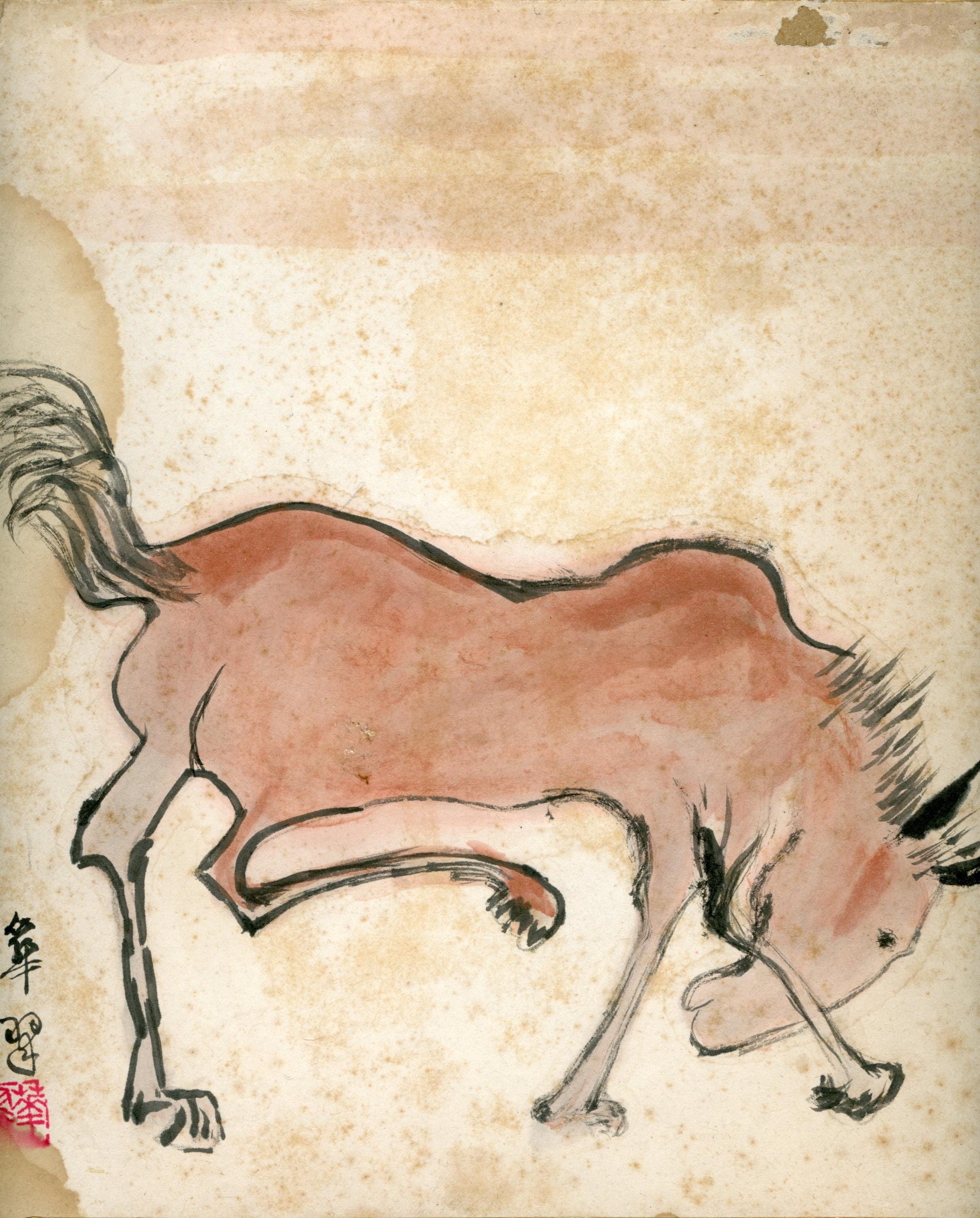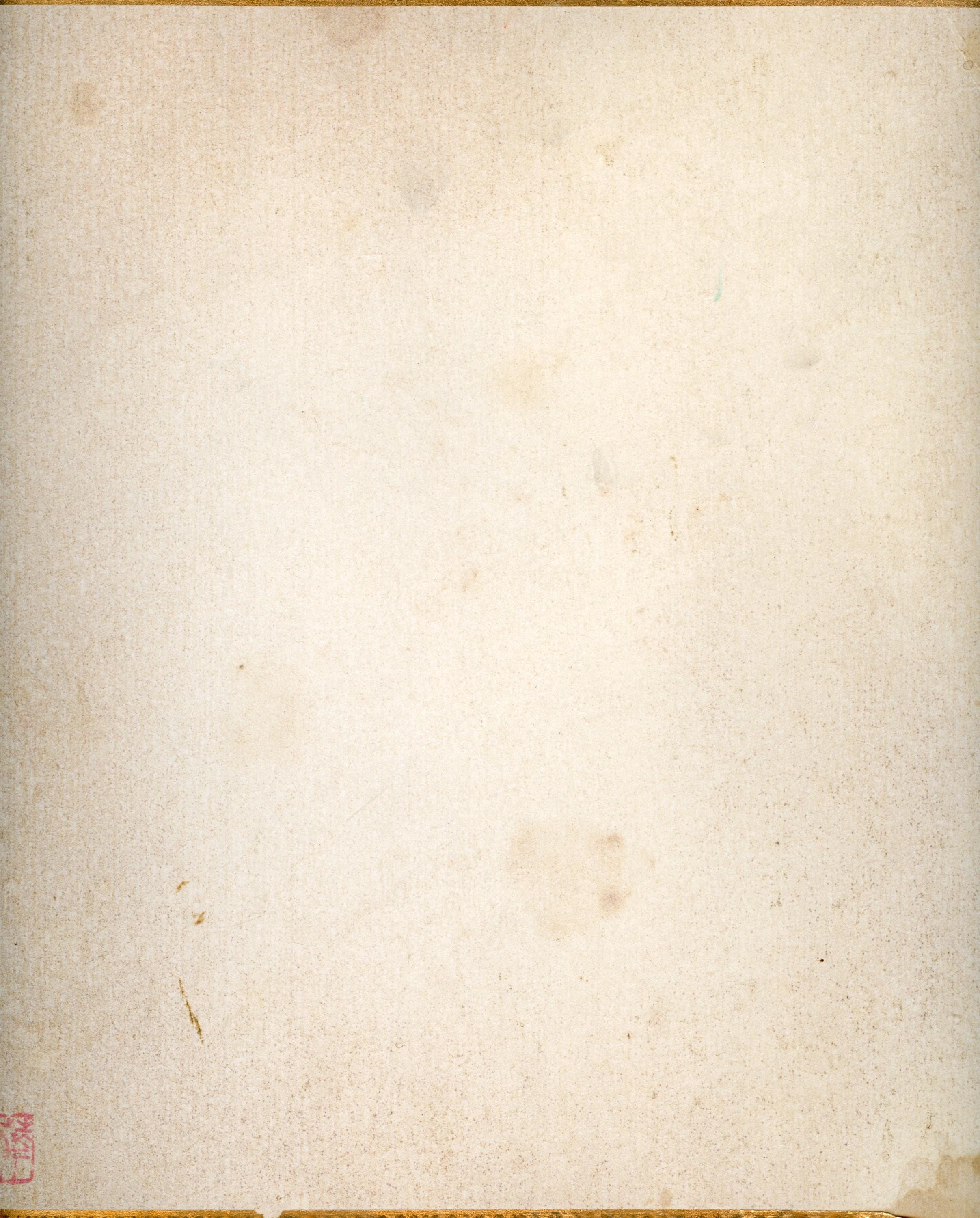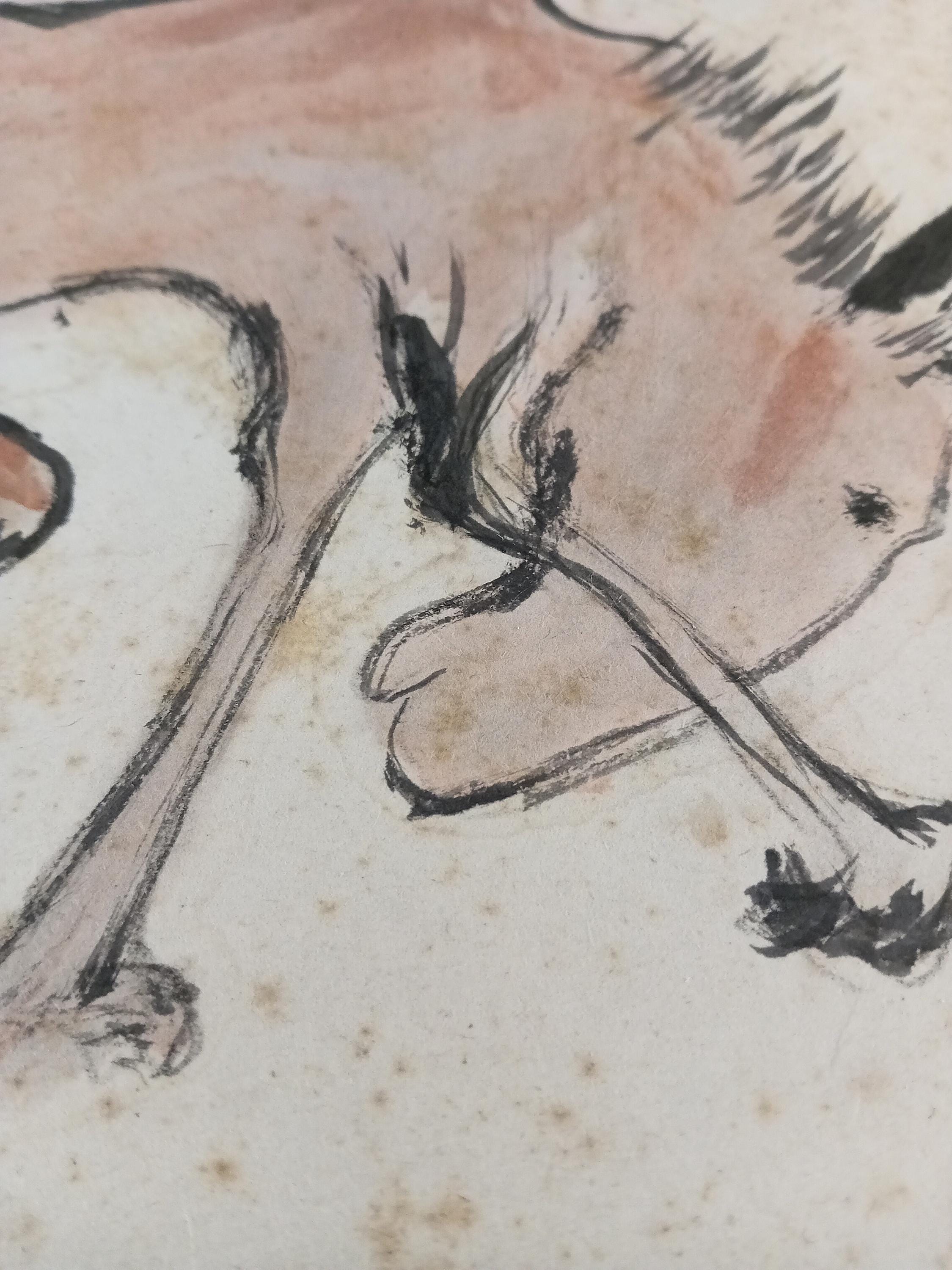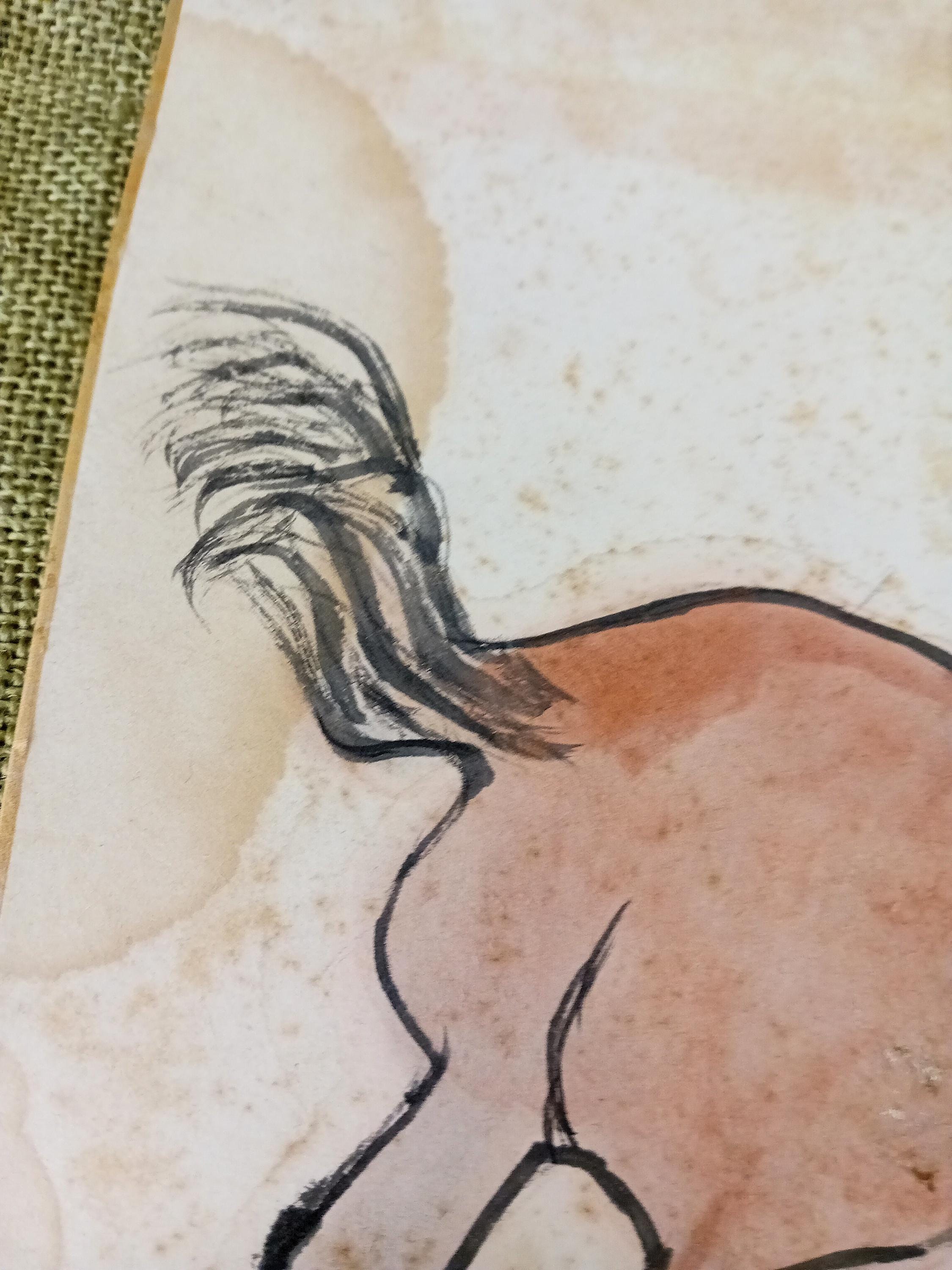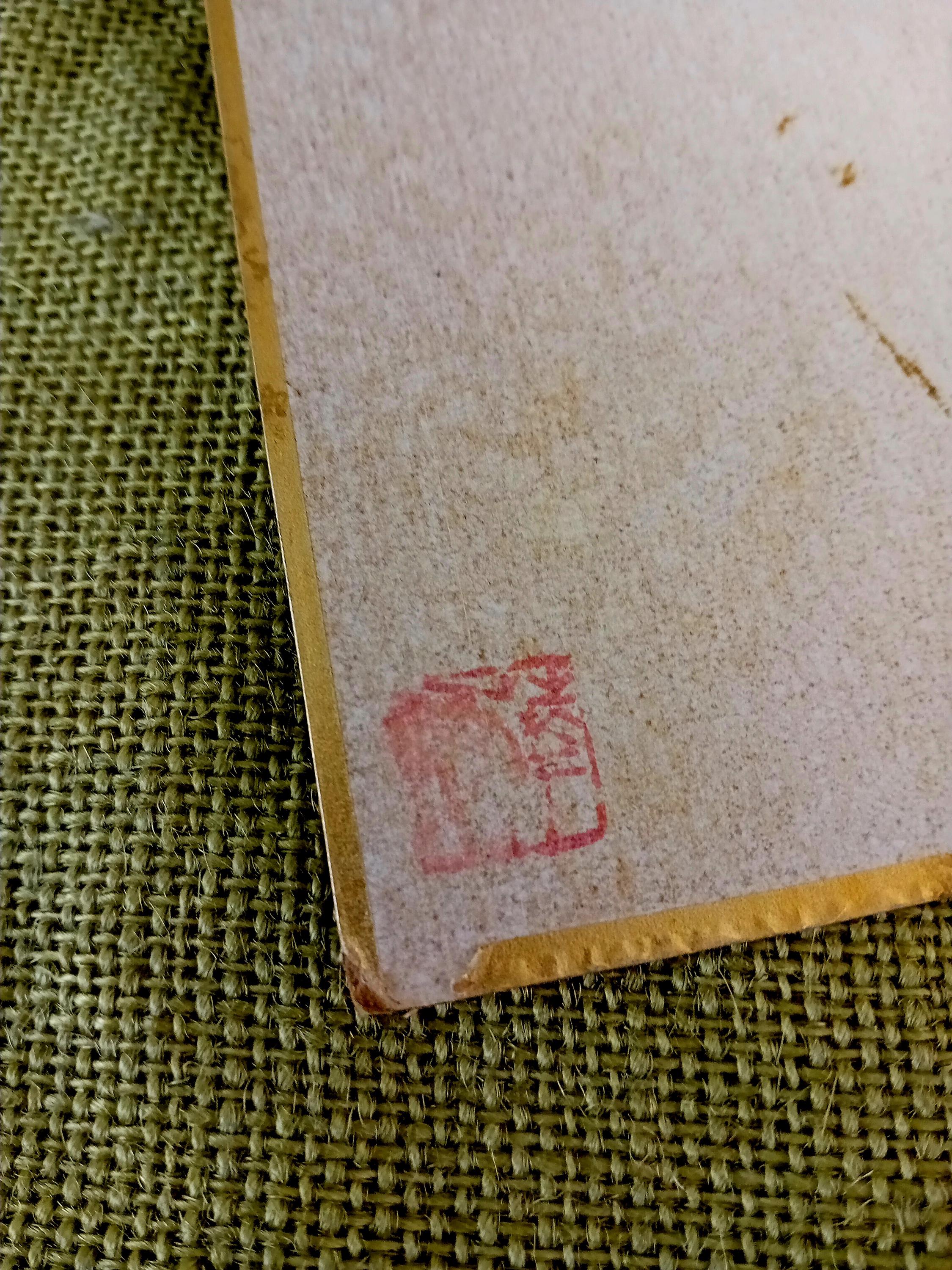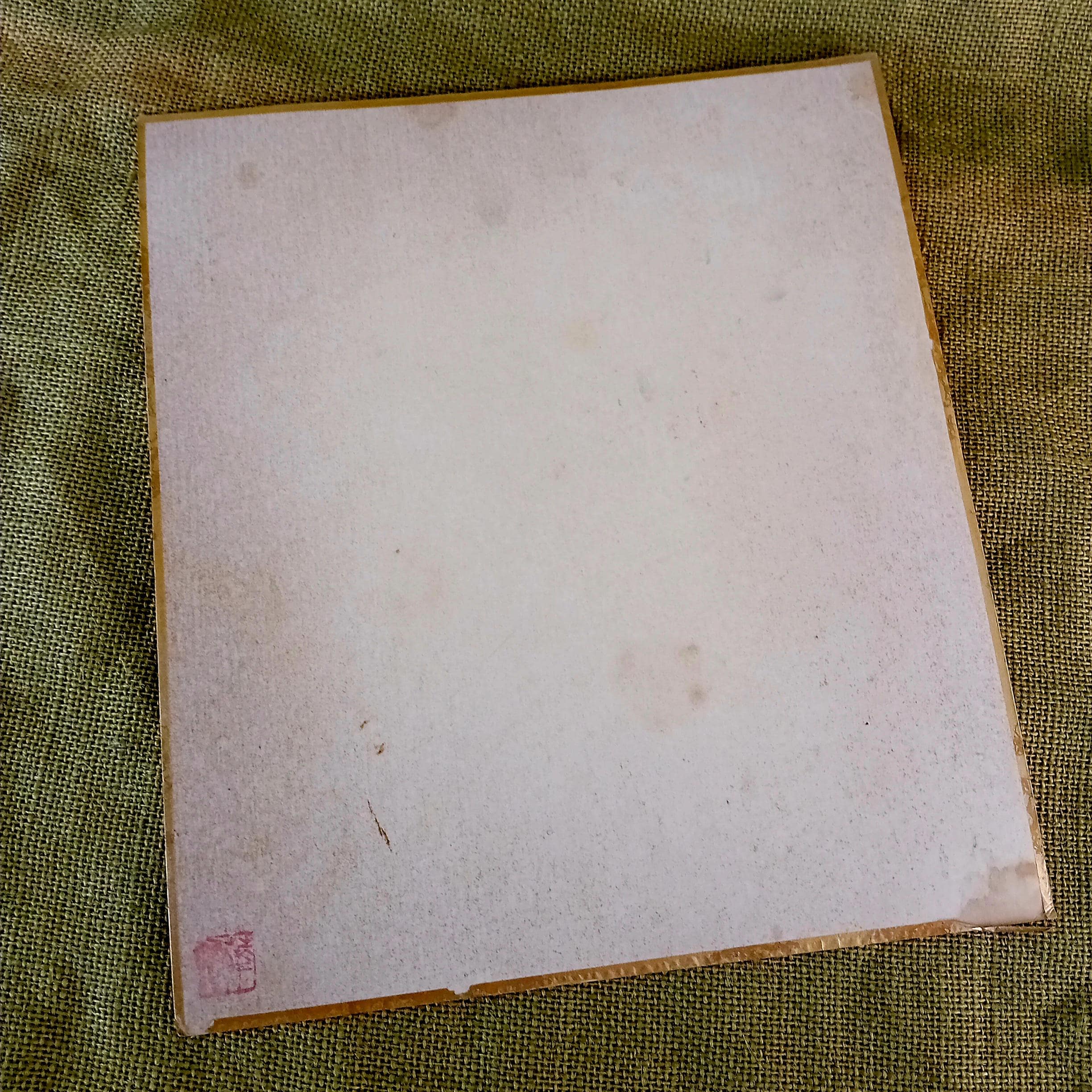Vintage Japanese Sumi-e, Original Shikishi Ink Painting, Early 20th Century (Likely Showa), Minimalism, Wall Hanging
$333.73
Authentic artworks
Original Japanese Sumi-e
Age: Vintage, Early 20th Century (Likely Showa)
Ink on shikishi
Signed, sealed
Cardboard, ink
Shikishi, small, traditionally square cards, have occupied a unique position in Japanese art for over a millennium. Initially serving as an adjunct to larger paintings during the Heian period (794-1185 AD), they provided a space for poetic inscriptions that complemented the visual artwork. This practice showcased the interplay between calligraphy and painting, highlighting the artistic versatility expected of the educated class.
During the Kamakura period (1185-1333 AD), shikishi transitioned from a supplementary element to an independent art form. Artists began to create works specifically for this format, exploring both calligraphy and painting within its limited space. This shift reflected a growing appreciation for the aesthetic possibilities of the shikishi as a standalone object.
The Muromachi period (1336-1573) saw the rise of ink wash painting, and shikishi proved to be an ideal medium for this minimalist style. Artists captured the essence of nature through succinct brushstrokes, often employing themes of Zen Buddhism. Shikishi also became associated with the refined atmosphere of tea ceremonies, further elevating their status.
The Edo period (1603-1868) witnessed a surge in the popularity of shikishi. Ukiyo-e artists adapted their woodblock print designs to this smaller format, making art accessible to a wider audience. Shikishi were embraced by all social strata, serving as decorative items, gifts, and tokens of appreciation.
Today, shikishi continue to be a vibrant part of Japanese artistic tradition. They are utilized for various purposes, from traditional calligraphy and painting to contemporary artistic expressions. As souvenirs and gifts, they offer a tangible connection to Japanese culture and aesthetics, embodying a rich history of artistic practice within a compact and elegant form.
The most common size of shikishi is 24 x 27 cm.
The Japanese term 墨絵 (Sumi-e) means Ink (墨) and Painting (絵).
Shikishi (色紙) literally - "colored paper".
If you're captivated by vintage works from the late 20th and early 21st centuries, including scrolls, shikishi, paintings, calligraphy, oshi-e, posters and vintage prints of renowned Japanese artists, explore our other gallery, JapaneseArtY, at https://japanesearty.etsy.com.
Please note that antique and vintage artworks may have traces of time, stains and creases due to age, so please review all photos.
We upload photos where you can check the condition of the item. But sometimes the photos may not show everything. Also, the colors in the photos may not match the original. Please feel free to ask for additional photos.
If you have any questions, please feel free to contact us.
Before shipping, all artworks are placed in special cardboard envelopes/boxes and cardboard to ensure their safety during transportation.
If possible, please provide your phone number when placing your order, it is often required by the courier for delivery.
Shipping from Latvia
Processing time
1-3 business days
Customs and import taxes
Buyers are responsible for any customs and import taxes that may apply. I'm not responsible for delays due to customs.
Payment Options
Returns & Exchanges
I don't accept returns, exchanges, or cancellations
But please contact me if you have any problems with your order.

